Microphone measurement and sound check
First of all, we measure the frequency range of the microphone to meet the feedback of the readers. To do this, we use our measurement room again, but virtually reverse the process. Of course, a true reciprocity calibration as a starting point exceeds our current possibilities and the effort far exceeds the benefit. That’s why we looked for a compromise. But since we have a calibrated measuring microphone, a comparison measurement and the calculation of the differences can at least produce a curve that is well usable for our purpose. Thus, it is not the exact frequency response of the microphone that we would not presume, but a meaningful approximation that also supports our subjective impression.
There is no low-cut, which is a pity and good. It’s a pity if you snap too much or have to cough, but good if you want it to sound full and “masculine”. The lower mids are very present, which gives the sound a very warm and full note. You can hate it or like it, the intelligibility of speech doesn’t suffer from it. From about 8 kHz there is a slight drop in level, above 10 kHz it gets thin. Only the 8 kHz are still sufficient for the sibilants and other blow-out events.
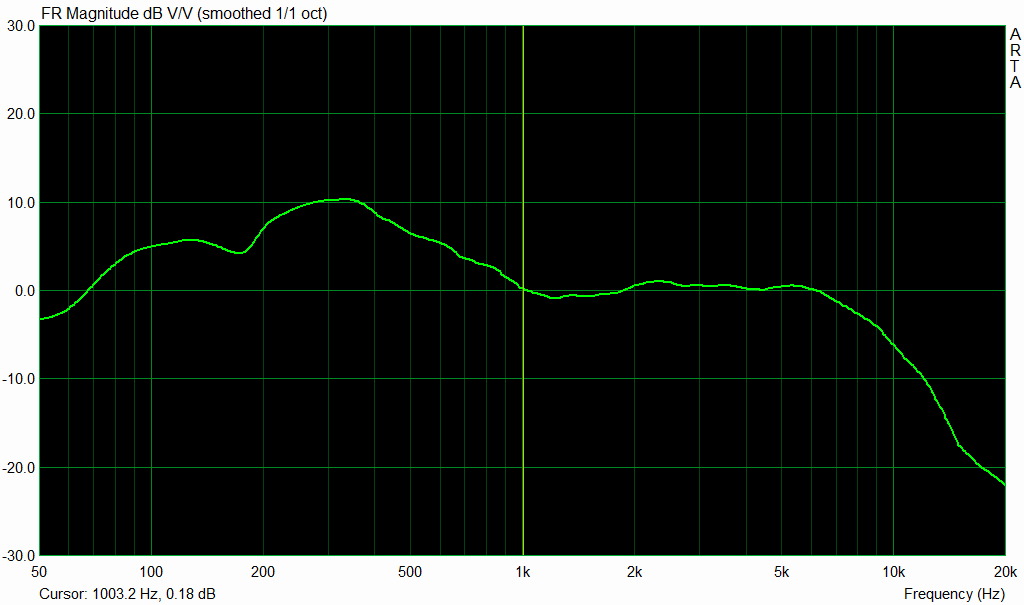
The advantage of the USB or Bluetooth solution: it always sounds the same, no matter on which motherboard. The level could be a bit more powerful, but you can adjust it in the Windows Control Panel if you want. So the sound fits and even if it’s not Hi-Fi, it’s above the average of the usual headset microphones. The resolution is quite good and at conferences you always have the fat bass at the start. Teamspeak also works, you just can’t spit and cough. Only the super tweeter is a bit thin, but you can get over it easily.
Original with condenser microphone (the t.bone)
Corsair Virtuoso
Headphone measurement
As we test, we have already explained in detail and transparently in the basic article “Gaming-Headsets: Myth, Truth and How We Test”, because you can’t really get any further with the usual audio swoosh of bass thunderstorms and high frequency whips. You have to be able to listen subjectively and measure at the same time. Let’s start with the latter.
Let’s now come to the measurement of headphone quality. I have standardized the frequency response again at 1 KHz to 0 dB, so that on the one hand the overall response with all encores and frequency drops can be evaluated well and on the other hand the possibility of comparison with previous measurements is not completely lost. But it’s still different, because the smoothing (1/1 octave) is supplemented by the almost unsmoothed display (1/24 octave). Of course, all this looks much more “jittery”, but it also fits much better to reality. Because one thing is also clear: it does not exist, the ideal curve.
But let’s start with the smoothed curve first, because it is easier to explain. What we see is not a typical bathtub, thanks for that. Of course, the slightly hinted upper bass hill pushes the lower mids down a bit in level, but you will be able to bear it. However, the presence from the upper mids and in the tweeter is already a bit difficult to get used to until crisp. Of course this is good for the player, but less so for the audiophile who likes to listen to a harp.
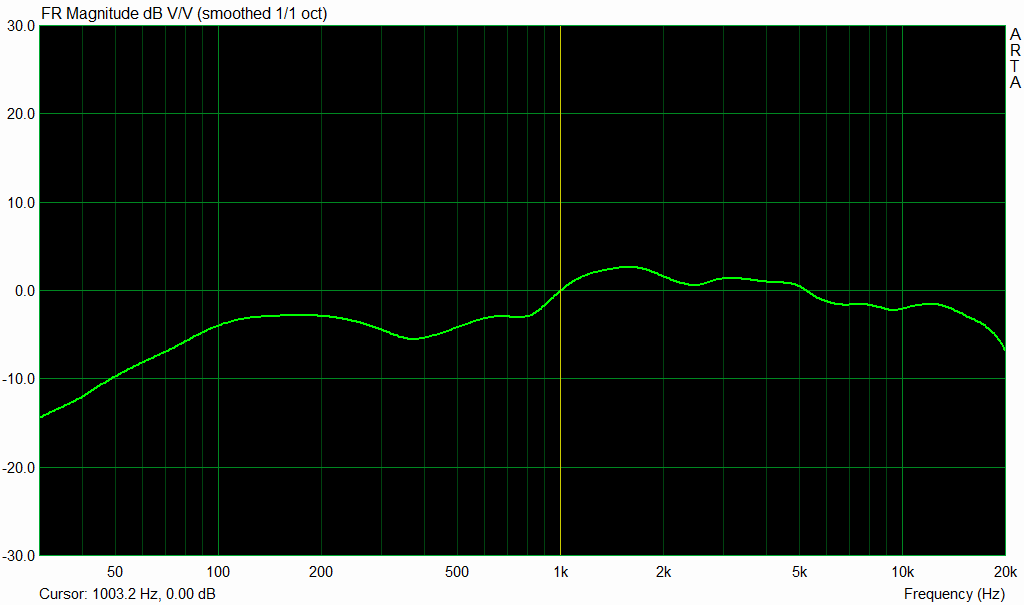
The bass also goes well down, but wants to be kicked properly. With a little more power through the equalizer you even have a really black bass tag, because the drivers are level stable in any case. If you put your mind to it, you’ll even get below the pain threshold for a short time. Whereby I refer to mine, because there are supposed to be people who don’t even wake up with a grenade impact.
Now let’s move the PR-compatible representation aside and look at the unsmoothed curve. Of course, the “only” semi-professional measuring equipment also plays a role here, but the measured results are still very similar. Here we can see even more clearly that the headset’s rather mid-height and height-heavy design is suited to e-Sports. But also here the manufacturer information on the data sheet has been made very consciously without the indication of the tolerance range. Corsair also has to put up with this criticism.
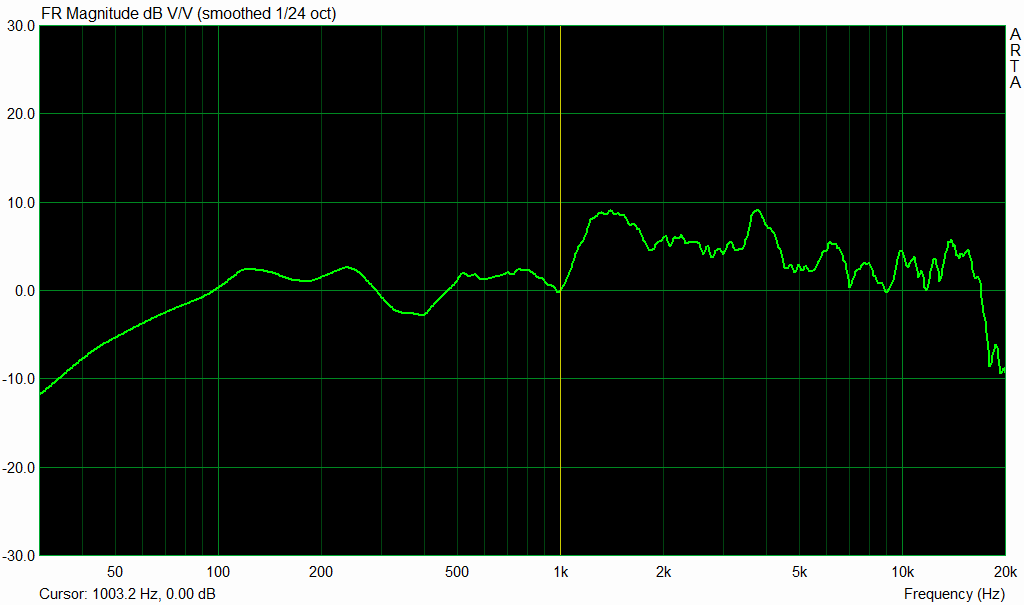
Cumulative Spectrums (CSD and SFT)
The cumulative spectrum refers to different types of graphs that show time-frequency characteristics of the signal. They are generated by successively applying the Fourier transform and appropriate windows to overlapping signal blocks. These analyses are based on the frequency response diagram already shown above, but additionally contain the element time and now show very clearly as a 3D graphic (“waterfall”) how the frequency response develops over time after the input signal has been stopped. Colloquially this is also called “decay” or “swing out”.
Normally, the driver should also stop as fast as possible after the input signal is lost. However, some frequencies (or even entire frequency ranges) will always decay slowly and then continue to appear in this diagram as longer-lasting frequencies on the time axis. This shows you where the driver has blatant weaknesses, maybe even “rattles” or where resonances occur in the worst case and could disturb the overall picture.
I will now test two types of a cumulative spectrum:
Cumulative Spectral Decay (CSD)
The cumulative spectral decay (CSD) uses the FFT and a modified rectangular window to analyze the spectral decay of the impulse response. It is mainly used to analyze the loudspeaker response. The CSD normally uses only a small FFT block shift (2-10 samples) to make resonances more visible throughout the frequency range and is therefore a useful tool for detecting resonances of the transducer. The picture shows very nicely the exemplary transient response and the hardly present bass resonances. However, the membrane resonates a bit at about 1 to 1.5 kHz, which I don’t find disturbing. The whole high frequency range, except for the peak at approx. 3.5 to 4 kHz, is quite harmonically balanced, but is very present in the sum.
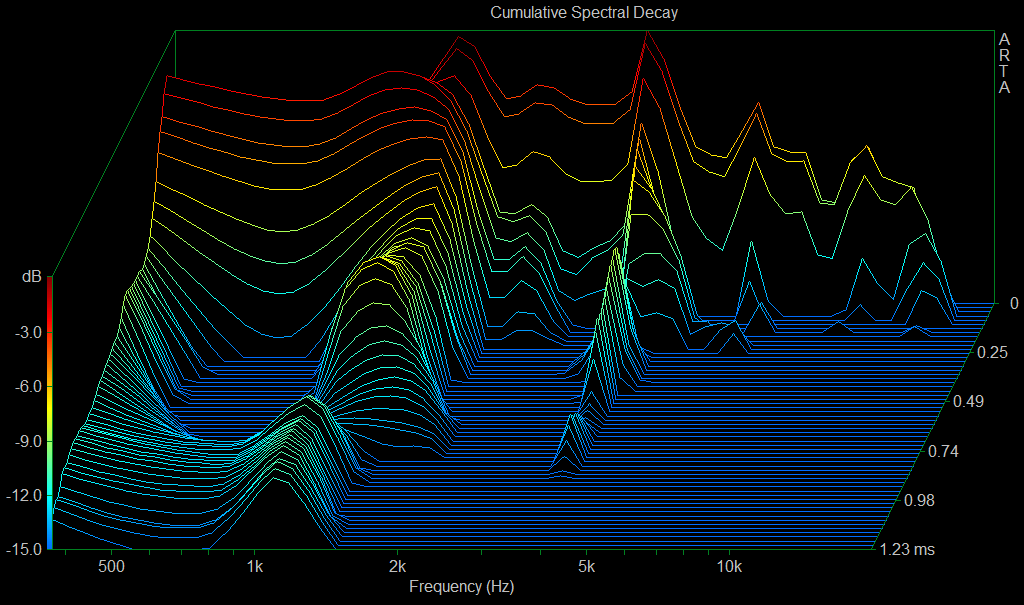
Short-time Fourier Transform (STF)
The Short-Time Fourier Transform (STF) uses the FFT and Hanning windows to analyze the temporally varying spectrum of recorded signals. Here, a larger block shift (1/4 to 1/2 of the FFT length) is generally used to analyze a larger portion of the time-varying signal spectrum, especially in applications such as speech and music. In the STF spectrum we now also see the work of the drivers, which afford only very small weaknesses in some frequency ranges. This ” pulling up ” at some frequencies (1.2 KHz, 3.7 KHz) repeats itself then still and with approx. 15 kHz still another whip comes in the super high frequency.
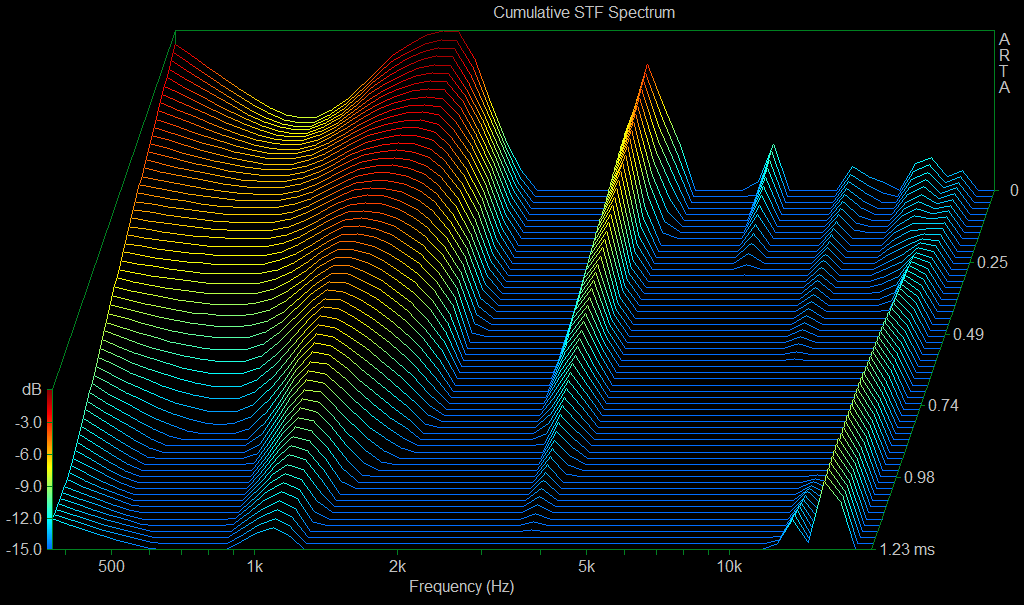
Subjective listening experience
Now let’s also test subjectively what you get in the original. But I locked the headset in the measuring room for almost 3 days and tortured it with a selected sound loop to scrub operating hours. What else can you do for our die-hard fans among the readers 🙂
Lower und upper Bass
Test the lowest bass in the subcontractave (16.4 Hz to 32.7 Hz) with a recording of Bach’s Toccata and Fugue in D minor (19 and 25 Hz) as well as Tchaikovsky’s Festival Overture 1812 (10 Hz and 12.5 Hz). The same applies to the lower ranges of the contract octave (32.7 to 65.4 Hz). The large bass drum (kick drum), which is a welcome companion in U-music and usually tuned to approx. 55 to 60 Hz, will round off this assessment.
The original bass is precise and crisp, but in its original condition somewhat to behave. With a bit of equalizer added, this can be done completely in raven black, because the drivers are level stable and the amplifier is not a total lightweight with the 50 mW per channel. So you can even have the Virtuoso mutate into a bass bomber if you like. The way the bass appears in the original, that’s fine at least for gaming. However, as an organ lover you can only get the subcontract octave to your ears satisfactorily if you add at least 6 dB. But then it goes down to the deepest cellar with a lot of fun.
The upper bass up to 150 Hz, which also contains the great octave (65.4 to 130.8 Hz), accommodates the basic speech frequency of the male voice and strongly determines the natural reproduction of male vocals.
Male vowels almost seem too full-bodied, but without overpacing. For gaming, the original sound is completely ok, because every bomb impact comes clean to the ear and doesn’t smear the rest of the sound backdrop. Of course, you don’t need the equalizer here, but if you want to be more audiophile, take away some of the upper bass. The emphasis is on something.
Midrange
The lower mids (also the fundamental range) are about 150 to 400 Hz. Together with the already mentioned upper bass, this range plays a very important role for the subjectively perceived warmth and fullness of the sound. The basic speech frequency of female voices can be found in this range.
Female vocals sink easily, but do not sink completely. Good is the precision with which you are led from the upper bass to the lower mids. This remains quite constant and can be quite pleasing. The fullness is still quite sufficient and if you like it a bit warmer tuned, add 3 to 6 dB, depending on your taste. Here you can choose between cooler reproduction and a fireplace feel-good ambience. The gamer will of course swing the frost whip.
The upper mids between 400 Hz and about two KHz contain a mark at one KHz, which is still the reference for many measurements. Unfortunately, this is often noticeable with cheaper devices, as manufacturers often try to overemphasize this frequency. Also in gaming this range does not play an insignificant role and a balanced reproduction contributes significantly to a good spatial resolution.
All this becomes more concise and clearer with increasing frequency and remains quite precise and differentiated despite the dominance starting at approx. 1 kHz. The depth gradation is very good and it doesn’t have to be a virtual 7.1 surround mix to get a good feeling for the location. The individual sources can be localized sufficiently well even at high levels, no matter whether there is a humming from below or not. The headset never sounds rough, cocky or careless, but often inspires enough when gaming to listen a bit more closely, because you are also offered the fine nuances.
High-frequency range
The human ear is most sensitive between two and about 3.5 kHz, especially since this range of the lower treble is responsible for the good overtone reproduction of the human voice. This frequency range is decisive for the recognition of a voice or an instrument; in this context we also speak of the respective timbre.
The voices have a high recognition value, as do the instruments. What is called timbre is quite close to the original, almost too aggressive in the foreground. For the target group this is not a disadvantage when playing, only those who prefer music should think about 3 dB less.
The medium highs (3.5 to six kHz) determine whether speech reproduction as a whole fails or fails, because the S and sibilants fall within this range. The upper highs then reach up to about ten kHz to pass into the super-high frequencies.
The Sibilants are here, almost overflowing. That scratches the metallic by a hair’s breadth. Once again lucky. Also the super high tone is still strong and up to approx. 17 kHz no wishes remain open. I can only hear up to 14.5 kHz, so that’s enough for me. Bats have to be braver from 20 kHz on at the latest. People probably rather less.

Summary and conclusion
While in the past, when testing gaming headsets at Corsair, you were often enough in the cave of horror, this headset no longer has to carry a helpful hand. That’s quite good, but it keeps (almost) everything it promises. The MSRP won’t hold up so well and if you estimate it at about 150 Euro in perspective, then this fun bolt is a real alternative to the fully wired ear warmer. The running time fits, optics, haptics and workmanship also.
The material mix is cleverly implemented, because you often only notice the plastic at second glance or through the ambitious laying on of hands. The headset hast enough power for the target group (a bass fanatic Kevin-Justin has to use the EQ for more bass) and there are enough reserves. That’s why it’s also the best buying tip for those who are not looking for bass-heavy lubricators, but precise henchmen for sound construction. The Corsair Virtuoso can do that quite well.































